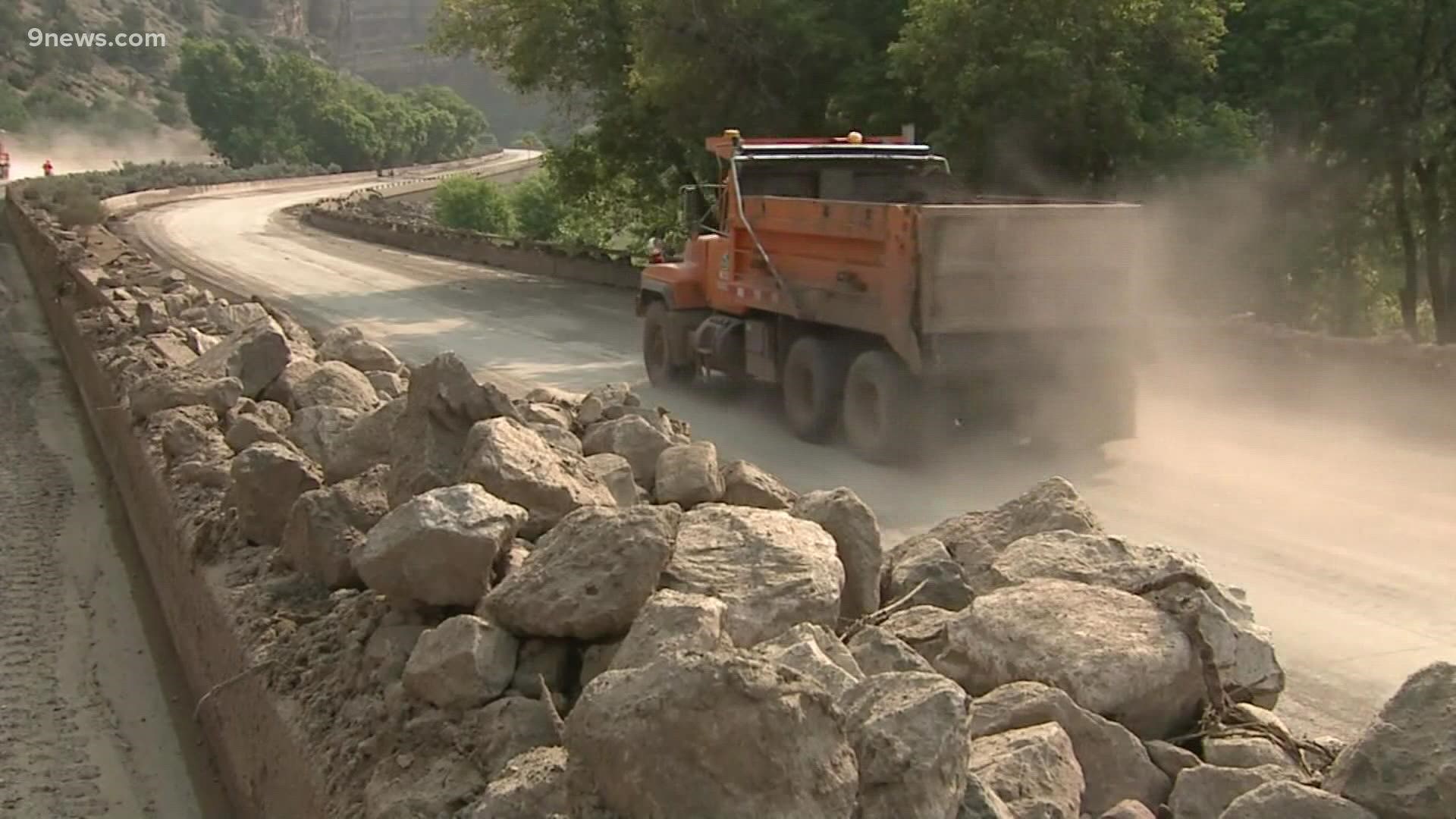DENVER — There are cities and towns in Colorado still recovering from brutal wildfires last year and are now dealing with a different, expensive crisis at the same time: protecting their water.
There were some terrifying moments over the summer when Glenwood Springs was isolated in more than one way because of mudslides.
"We were cut off geographically from the Front Range with I-70 being down," said Glenwood Springs Mayor Jonathan Godes. "And we were not without water, but without a way to bring in new water to be able to process it."
RELATED: I-70 through Glenwood Canyon closed indefinitely after 'extreme damage' from heavy rain and flooding
Glenwood Springs is still dealing with issues caused by the Grizzly Creek burn scar after the fire ripped through its two main water sheds. Within seven days, the city started drawing up plans to better protect the water quality, which puts them in a much better position now. However, even as recently as this week, they saw ash and sediment in their water supplies.
"We basically broke the bank to do all the projects as quickly as humanly possible," said Matthew Langhorst, who works for the city.
The priorities were protecting water sources, improving the treatment plants and building in resiliency, which is adding up to around $8 million so far.
That's being paid through grants, loans and changes to water rates.
"We had to raise water rates 36% to users," said Godes. "That's a combination of investments in existing water infrastructure and the results of the Grizzly Creek Fire and fallout."
The mayor said the costs add up to a lot for a city of just under 10,000 people.
The funding woes are plaguing bigger cities like Greeley, as well -- a part of Colorado still reeling from the Cameron Peak and East Troublesome fires.
"We were unable to treat water from the river about 40 days this year," said Adam Jokerst with Greeley.
He said over the summer, when ash, sediment and debris washed off the slopes and mixed with their water supplies, that water turned jet black and couldn't be treated.
"We estimate the cost of recovering just the watersheds, not houses or roads, is $45 million," said Jokerst.
That's for multiple spots in northern Colorado.
So far, Jokerst said they've secured roughly half of that money and aren't sure where the rest will come from.
This effort is being led by Greeley, Fort Collins and several other water providers in northern Colorado. As of late September, $19 million has spent on erosion mitigation and rehabilitation work. They are hoping to secure the second half of the funding by the spring to continue their work to protect water sources.
The condition of water after wildfires is such a concern that health systems like Kaiser are writing about the issues, both in Colorado and outside of the state.
Glenwood Springs and Greeley said they are working their options -- grants, loans and money from the federal government.
The Glenwood Springs mayor and city manager were in Washington, D.C. Wednesday to talk about climate change and to raise their hands to tell the feds they need help to be able to handle these kinds of issues in the long run.
Greeley is working on more solutions, including water trade agreements with their agricultural partners.
SUGGESTED VIDEOS: Full Episodes of Next with Kyle Clark

